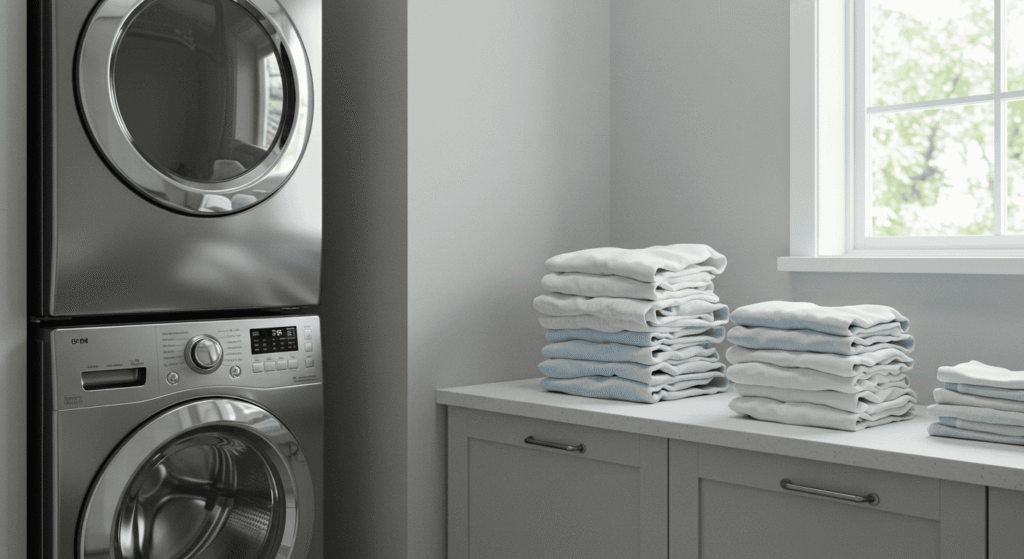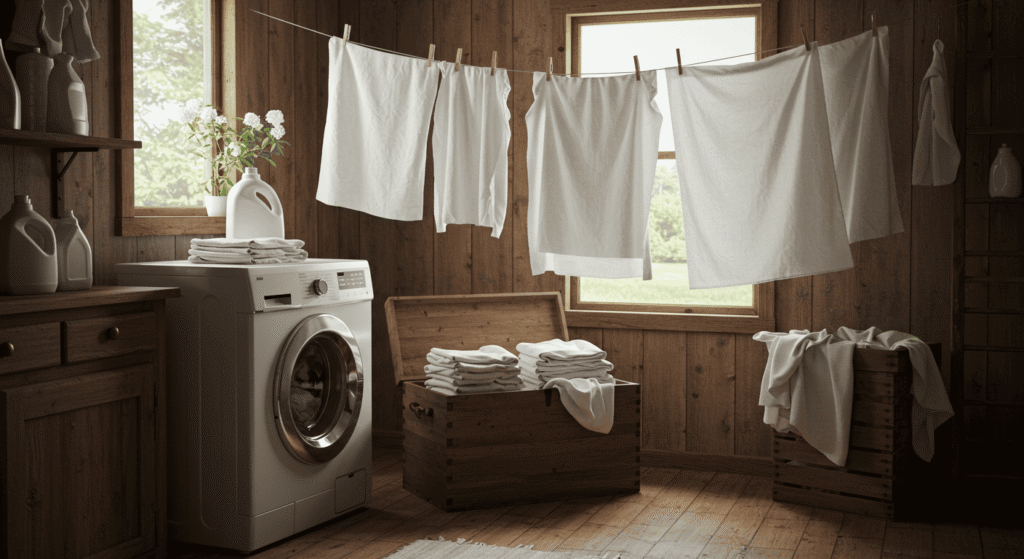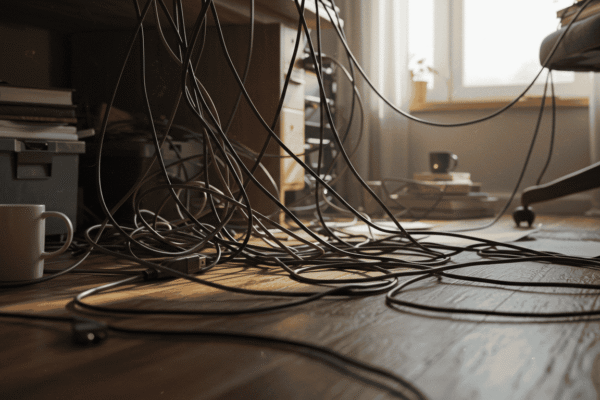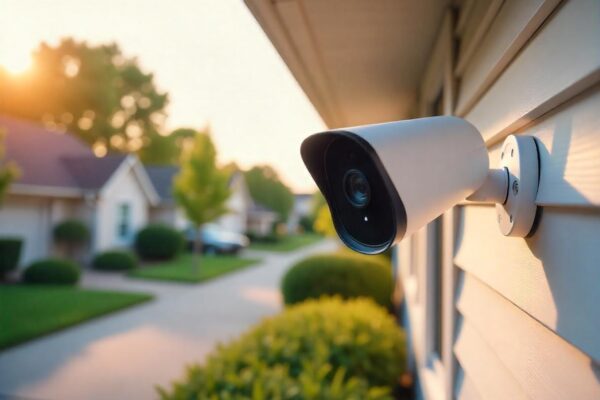Energy-efficient laundry practices are more important than ever for saving both money and the planet. By adopting simple changes in how you wash and dry your clothes, you can significantly reduce energy consumption without sacrificing cleanliness or convenience. In this guide, you’ll discover practical and eco-friendly laundry methods that anyone can start today, helping you cut down on your energy consumption, lower utility bills, and contribute to a greener home. Ready to transform your laundry routine with these easy, energy-saving laundry tips? Let’s dive in!
Why Energy-Efficient Laundry Practices Matter

Adopting energy-efficient laundry practices is a crucial step toward reducing your household’s overall energy consumption. Laundry is one of the most energy-intensive chores in many homes, and traditional methods often waste a significant amount of power. Understanding why making your laundry routine more efficient matters can help motivate lasting change that benefits both the environment and your wallet.
Environmental Impact of Traditional Laundry Habits
Traditional laundry habits, such as using hot water cycles and running partial loads, contribute to a larger carbon footprint than many people realize. Washing machines and dryers consume considerable amounts of electricity, much of which comes from fossil fuels. This energy use results in greenhouse gas emissions that contribute to climate change. Additionally, inefficient laundry practices waste water and detergents, further harming the environment. By adopting energy-saving laundry tips, you reduce unnecessary energy waste and help lower your home’s overall environmental impact.
Financial Benefits of Saving Energy in Laundry
Beyond environmental benefits, energy-efficient laundry practices directly affect your utility bills. Using less electricity and water during laundry cycles can lead to noticeable savings over time. For example, washing clothes in cold water instead of hot can cut energy use dramatically, reducing monthly expenses. Similarly, air-drying clothes or optimizing dryer settings lowers electricity consumption, which translates into lower costs. Simple adjustments in your laundry routine can add up to significant financial relief, making energy efficiency a smart choice for your budget.
How Small Changes Lead to Big Results
Many people believe that saving energy in laundry requires expensive appliances or drastic lifestyle changes. However, small and easy-to-implement adjustments can make a big difference. Simple actions like running full loads, choosing shorter wash cycles, or air-drying your clothes can reduce energy use significantly without compromising cleanliness or convenience. These easy wins build momentum and encourage continued efforts toward a more sustainable laundry routine. By incorporating just a few energy-efficient laundry practices into your daily life, you’ll be surprised at how much energy and money you can save.
| Laundry Practice | Energy Consumption | Estimated Monthly Cost* | Environmental Impact |
|---|---|---|---|
| Traditional Laundry Habits | High (hot water, partial loads, long cycles) | $15 – $25 | High carbon footprint, more water waste |
| Energy-Efficient Laundry Practices | Low (cold water, full loads, short cycles, air-drying) | $5 – $10 | Reduced carbon footprint, conserves water |
Optimizing Your Washing Machine Settings for Energy Savings
Fine-tuning your washing machine settings is one of the simplest ways to adopt energy-efficient laundry practices. Small adjustments to temperature, cycle length, and load size can lead to significant reductions in electricity use without sacrificing the quality of your laundry.
Choosing the Right Water Temperature
One of the biggest energy consumers in the laundry process is heating water. Washing clothes in hot or warm water consumes much more energy compared to cold water cycles. Cold water washing not only saves energy but also helps preserve the color and fabric integrity of your clothes. Modern detergents are designed to work effectively in cold water, making it a practical and efficient choice for most laundry needs.
Selecting Shorter Wash Cycles Without Compromising Cleanliness
Long wash cycles use more electricity and water, but they are often unnecessary for everyday laundry. Shorter cycles can clean clothes just as effectively, especially if you separate heavily soiled items from lightly worn ones. Using appropriate cycles tailored to the soil level helps reduce energy consumption while maintaining freshness.
The Role of Load Size in Energy Efficiency
Running your washing machine with a full load maximizes energy efficiency by spreading the energy used over more clothes. Small or partial loads waste energy since the machine uses nearly the same amount of power regardless of the load size. However, overloading can reduce washing effectiveness and strain your appliance. Aim for balanced, full loads to get the best results.
| Wash Temperature | Cycle Length | Approximate Energy Use per Load | Notes |
|---|---|---|---|
| Cold (20°C) | Short (15-30 min) | Low | Best for lightly soiled clothes; saves energy and fabric wear |
| Warm (30-40°C) | Medium (30-45 min) | Moderate | Suitable for moderately soiled clothes; moderate energy use |
| Hot (60°C or above) | Long (45-60 min) | High | Needed for heavy soil or sanitizing; highest energy consumption |
Smart Laundry Habits That Save Energy

Incorporating smart laundry habits into your routine is essential for maximizing energy efficiency. By adjusting how and when you do laundry, you can reduce unnecessary power use and make the most out of every load, helping both the environment and your budget.
Running Full Loads vs. Partial Loads
Running your washing machine with full loads is one of the most effective ways to save energy per garment. When you wash fewer clothes in a partial load, the machine still uses almost the same amount of electricity and water as it would for a full load, resulting in wasted energy. Full loads spread the energy used over more items, increasing efficiency. However, avoid overloading, which can reduce cleaning effectiveness and strain your machine.
Spacing Out Laundry Loads for Efficiency
Another smart habit is to time your laundry loads during off-peak energy hours if your utility provider offers time-of-use rates. Doing laundry early in the morning, late at night, or on weekends when demand is lower can reduce your energy costs. Additionally, spacing out loads to avoid running multiple cycles back-to-back can prevent spikes in energy consumption and may prolong the life of your appliances.
Air-Drying vs. Machine Drying: Pros and Cons
Air-drying clothes on racks or clotheslines saves a substantial amount of energy compared to machine drying. Dryers are among the highest electricity consumers in household laundry due to the heat they generate. Using natural airflow to dry clothes requires no electricity and reduces wear on fabrics, extending their lifespan. However, air-drying depends on weather and space availability, and it can take longer. Machine drying is faster and convenient but comes at a higher energy cost. Combining both methods—air-drying when possible and using the dryer sparingly—strikes a good balance for energy efficiency.
Energy-Efficient Drying Techniques You Can Easily Adopt

When it comes to energy-efficient laundry practices, drying is often overlooked—but it’s one of the biggest opportunities to save energy. By rethinking how you dry your clothes, you can reduce electricity use, protect your garments, and make your overall laundry process much more sustainable.
The Power of Natural Air Drying
Air drying is the most energy-efficient way to dry clothes—because it uses no electricity at all. Whether you have access to outdoor space or need to dry clothes indoors, there are effective options. Outdoors, a simple clothesline in a sunny, breezy spot does the job well. Indoors, a drying rack near a window or heating source works even during colder months. Make sure clothes are spaced out for proper airflow and quicker drying.
How to Use Dryer Settings Wisely
When using a dryer, smart settings matter. Choose sensor drying functions if available—they stop the cycle once clothes are dry, preventing excess energy use. Also, lower heat settings use significantly less electricity and are gentler on fabrics. Though cycles may be longer on lower heat, the energy saved per cycle is worth the wait.
Preventing Overdrying to Save Energy
Overdrying clothes doesn’t just waste electricity—it also damages fabric fibers, causing shrinkage, fading, and wear. One of the easiest ways to avoid this is by removing clothes from the dryer while they’re still slightly damp and letting them finish air drying. This hybrid method cuts down on dryer time and protects your clothes while still getting the job done efficiently.
✅ Quick Checklist: Smart Drying Tips
| Drying Tip | Why It Works |
|---|---|
| ✅ Use a drying rack or clothesline | Zero energy use and preserves clothing fibers |
| ✅ Choose sensor dry settings | Prevents energy waste from overdrying |
| ✅ Use low or medium heat settings | Reduces electricity use and fabric damage |
| ✅ Don’t overload the dryer | Improves airflow and shortens drying time |
| ✅ Clean the lint trap before every load | Boosts dryer efficiency and reduces fire risk |
| ✅ Remove clothes slightly damp | Cuts down drying time and saves electricity |
| ✅ Dry similar fabrics together | Ensures even drying and avoids wasted cycles |
This checklist provides a quick, practical reference for readers to apply energy-saving drying habits immediately.
Choosing Laundry Detergents and Additives That Support Efficiency

Laundry efficiency doesn’t stop with your appliances—it extends to the detergents and additives you use. Picking the right products and using them properly can improve your washing machine’s performance, reduce rinse times, and help the environment at the same time. Let’s explore how smarter choices in detergents can boost your overall energy-efficient laundry practices.
Why Low-Sudsing Detergents Matter
High-efficiency (HE) washing machines are designed to use less water—and that means they require low-sudsing detergents to work properly. Excess suds can interfere with the machine’s rinsing cycle, forcing it to run longer or repeat rinses, which increases water and energy use. Low-sudsing formulas dissolve quickly and rinse out easily, allowing your machine to perform at its best while conserving energy.
Using the Right Amount of Detergent
More detergent doesn’t mean cleaner clothes. In fact, using too much detergent can leave behind residue, require additional rinsing, and make your machine work harder. This not only wastes detergent but also uses more water and energy per load. Always follow dosage guidelines and consider your load size, soil level, and water hardness to avoid overuse.
Eco-Friendly Detergent Alternatives and Their Benefits
Natural and biodegradable detergents are a great way to make your laundry routine even greener. These eco-friendly alternatives are often free of harsh chemicals, making them better for your skin and the environment. They break down more easily in water systems, reducing pollution. Plus, many are concentrated, meaning you can use less per load—another bonus for energy efficiency since your machine spends less time and water rinsing out residues.
Maintaining Your Laundry Appliances for Peak Efficiency
Even with the best habits, your energy-efficient laundry practices can fall short if your appliances aren’t properly maintained. A well-kept washer and dryer not only use less energy but also last longer, perform better, and keep your clothes in great condition. Let’s dive into the essential maintenance routines that help you get the most out of your laundry setup.
Regular Cleaning of Washing Machine Filters and Drums
Your washing machine builds up detergent residue, fabric lint, and mineral deposits over time—especially in hard water areas. Cleaning the filters and drums regularly ensures proper water flow, efficient rinsing, and effective spinning. A clogged filter forces the motor to work harder, using more energy and increasing wear. A monthly cleaning with a vinegar rinse and wiping down the drum can keep things fresh and efficient.
Checking and Repairing Seals and Hoses
Worn-out door seals or leaking hoses can lead to water loss, damp areas, mold growth, and wasted energy. If the machine is working harder to compensate for leaks or pressure drops, it’s costing you more in utilities. Regularly inspect hoses for cracks, bulges, or rust, and make sure seals are intact and clean. Replacing these parts is affordable and can prevent expensive water damage or performance issues.
When to Consider Upgrading Your Appliances (Energy Efficiency Focus)
Even the best-maintained machines reach a point where they become less efficient. If your washer or dryer is over 10 years old, it may be using significantly more electricity and water than newer models. Frequent breakdowns, longer cycle times, and louder-than-usual noises are signs of aging. While upgrading is a larger investment, it can dramatically lower your energy use—and your monthly utility bills—over time.
🛠️ Laundry Appliance Maintenance Schedule
| Maintenance Task | Recommended Frequency | Why It Matters |
|---|---|---|
| Clean washing machine drum | Once a month | Prevents buildup, keeps wash cycles efficient |
| Clean filters (lint trap, drain pump) | Every 1–2 months | Maintains water flow and reduces strain on motor |
| Inspect door seals for mold or damage | Monthly | Avoids leaks and inefficient sealing |
| Check hoses for wear or leaks | Every 3–6 months | Prevents energy loss and potential water damage |
| Run cleaning cycle with vinegar or cleaner | Monthly | Removes detergent buildup and hard water deposits |
| Empty lint trap in dryer | After every load | Boosts airflow and reduces fire hazard |
| Deep clean dryer vent | Every 6–12 months | Improves drying efficiency and safety |
| Evaluate appliance performance for upgrades | Annually | Ensures you’re using the most energy-efficient model |
Scheduling Laundry to Maximize Energy Efficiency
One of the smartest ways to boost your energy-efficient laundry practices is by scheduling your laundry loads thoughtfully. When and how often you do laundry can have a significant impact on your energy consumption and overall household efficiency. Let’s explore practical strategies to time your laundry for the best results.
Understanding Your Household’s Energy Usage Patterns
The first step is to become aware of your home’s energy usage patterns. Many utility companies offer time-of-use plans that charge less for electricity during off-peak hours, typically late at night, early morning, or weekends. By running your washer and dryer during these times, you can reduce your energy costs while easing demand on the power grid. Tracking your household’s daily energy spikes can also help you avoid running laundry machines simultaneously with other heavy appliances.
Coordinating Laundry with Renewable Energy Sources
If you have access to renewable energy sources like solar panels or wind turbines, aligning your laundry schedule with their peak production hours is a smart move. For example, solar panels generate the most electricity during midday, so running laundry loads when the sun is brightest ensures your appliances use clean, renewable power instead of grid electricity. This approach not only cuts costs but also reduces your carbon footprint.
Creating a Weekly Laundry Plan to Reduce Wasteful Loads
Planning your laundry routine in advance can help avoid running partial or unnecessary loads. Establish a weekly laundry plan by designating specific days for different types of laundry—such as bedding on Monday, work clothes on Wednesday, and towels on Friday. This reduces the temptation to wash small loads and helps maintain consistent habits, maximizing energy and water efficiency.
Quick Tips and Hacks for Energy-Efficient Laundry Every Day
Incorporating small, easy changes into your routine can make a big difference in your energy-efficient laundry practices. These quick tips and clever hacks help you save energy without complicating your laundry day. Here are some smart, practical ideas you can apply immediately.
Using Laundry Balls or Alternative Energy Savers
Simple additions like laundry balls or dryer balls can improve air circulation inside your dryer, reducing drying time and energy consumption. These balls help separate clothes, allowing hot air to flow more efficiently and prevent clumping. Some alternatives are made of wool or plastic and are reusable, making them a sustainable choice to lower your dryer’s power use.
Wrinkle Prevention to Reduce Ironing Needs
Minimizing wrinkles in your laundry means less time—and energy—spent ironing. Remove clothes promptly from the washer or dryer and shake them out before hanging or folding. Using lower heat settings and proper drying techniques can also prevent fabric from bunching. The less ironing you do, the more energy you save, while keeping your clothes looking fresh and crisp.
Seasonal Laundry Tips for Energy Efficiency
Adjust your laundry habits according to the season to optimize energy use. During warm months, take advantage of sunny, breezy days for air drying. In humid or cold seasons, maximize indoor drying space near heat sources or use shorter dryer cycles with sensor settings to avoid overdrying. Changing your routine with the weather helps keep energy use low year-round.
⚡ Quick Hacks for Energy-Efficient Laundry
- Use laundry balls or dryer balls to cut drying time
- Remove clothes promptly to prevent wrinkles
- Shake out garments before drying or hanging
- Air-dry whenever possible, especially in warm weather
- Use lower heat dryer settings to save electricity
- Plan laundry loads by season and weather conditions
- Avoid overloading machines for better efficiency
This quick reference list offers easy-to-remember hacks to help readers adopt energy-efficient laundry habits effortlessly.
Embracing Energy-Efficient Laundry Practices for Lasting Savings
Adopting energy-efficient laundry practices is a simple yet powerful way to reduce your environmental impact and lower your utility bills. By optimizing machine settings, maintaining appliances, scheduling loads wisely, and using smart laundry hacks, you can make a meaningful difference every time you do laundry. Small, consistent changes add up to big results—saving energy, money, and helping the planet. Start incorporating these tips today and enjoy a cleaner, greener laundry routine that works for you and your home.












